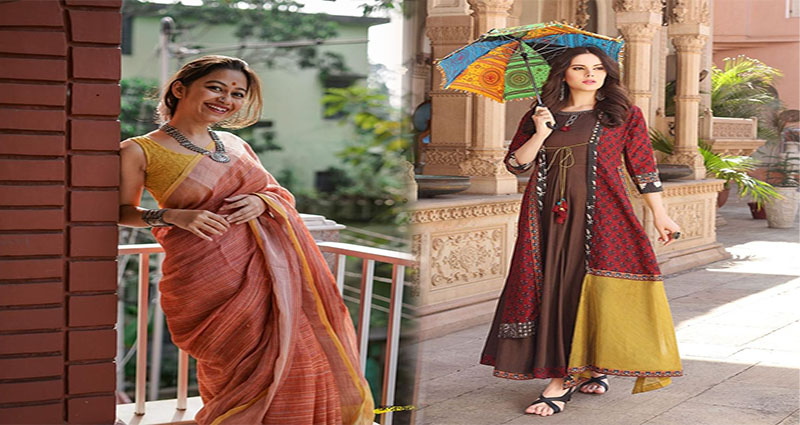Ethnic wear is a traditional dress that reflects the culture of its people. The origin of ethnic wear can be traced back to ancient civilizations. India has a rich tradition of fashion and design. In India, there are numerous regional differences in the way women dress. The use of cotton by Indian weavers dates back to the Indus Valley civilization. Ethnic wear is still popular today in India and globally as well
Ethnic wear is a traditional dress that reflects the culture of its people.
Ethnic wear is clothing that is traditional to a particular culture. It may be made from natural materials, such as animal skins or cotton, or synthetic fabrics like polyester. Ethnic clothing can be worn by both men and women, but it often has special significance for women as it may be more revealing than everyday clothing.
Ethnic wear includes garments such as kimonos (which originated in Japan) or saris (which originated in India).
The origin of ethnic wear can be traced back to ancient civilizations.
Ethnic wear can be traced back to ancient civilizations. There are numerous examples of traditional clothing in different countries, including India and China. For example, the use of cotton by Indian weavers dates back to the Indus Valley civilization (c. 2500 BC).
India has a rich tradition of fashion and design.
Indian fashion is a result of the country’s rich cultural heritage. It reflects the country’s diverse cultural heritage and is influenced by its rich cultural heritage. The Indian fashion industry is one of the largest in the world, with an annual turnover of $27 billion (2018).
In India, there are numerous regional differences in the way women dress.
In India, there are numerous regional differences in the way women dress. For example, in Tamil Nadu women wear saris while men wear dhotis and shirts. In Kerala, women wear kanchipurams or mundus with churidar pajamas for their daily activities whereas in Uttar Pradesh they prefer sarees with lehengas for special occasions.
In general, children’s clothing varies from region to region as well (e.g., Punjabi children wear salwar suits while Gujarati kids tend towards kurta pyjamas).
The use of cotton by Indian weavers dates back to the Indus Valley civilization.
The use of cotton by Indian weavers dates back to the Indus Valley civilization. Cotton is a versatile material that can be used for clothing and other products, such as bedding and tablecloths. It’s also popular because it’s easy to wash, dry and maintain–cotton seeds are pressed together to form a sheet of fiber that can be spun into thread or yarn.
Ethnic wear is still popular today in India and globally as well.
Ethnic wear is still popular today in India and globally as well. It is popular in the US, Europe, Canada and Australia.
Ethnic wear is an important part of Indian culture and tradition.
Ethnic wear is an important part of Indian culture and tradition. The traditional attire of the country reflects the diverse cultural influences that have shaped modern India over its long history. In fact, clothing in India has evolved from its earliest days as a nation.
The use of cotton by Indian weavers dates back to the Indus Valley civilization (3rd millennium BCE). Most of what we know about this period comes from archaeological findings such as pottery, figurines and seals depicting people wearing tunics or robes over their bodies with varying lengths depending on whether they were men or women; some even wore turbans around their heads!
In conclusion, we can say that ethnic wear is an important part of Indian culture and tradition. It reflects the history and traditions of different regions in India, as well as other countries around the world. Ethnic wear is still popular today because it gives people an opportunity to express themselves through fashion and celebrate their heritage!











